



India's poverty rate is highly contested. New World Bank data indicates a significant drop in extreme poverty, but the lack of an updated official domestic poverty line since 2011 leads to varied interpretations. How poverty is measured—whether by international or domestic standards—fundamentally changes the outcome, making it a subjective issue.
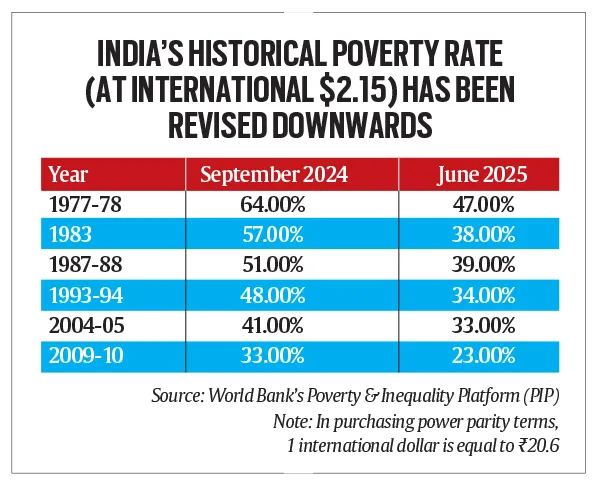
Copyright infringement not intended
Picture Courtesy: INDIAN EXPRESS
The World Bank data shows a drop in extreme poverty, however, the reality is complex due to varying poverty lines and data collection gaps.
Poverty Line is an income threshold used to identify who is poor. There is no single, universally accepted poverty line. Different lines can be established depending on the analytical goal, such as identifying the "poorest of the poor" versus those with a slightly higher but still basic standard of living.
India's Approach to Measuring Poverty
Pre-2009 => Before the Tendulkar Committee, the poverty line was ₹17 per day for urban areas and ₹12 for rural areas.
Tendulkar Committee (2009) => This committee raised the lines to ₹29 (urban) and ₹22 (rural) per day. These were updated in 2011-12 to ₹36 and ₹30, respectively.
Rangarajan Committee (2014) => This committee recommended a further increase to ₹47 (urban) and ₹33 (rural), but these recommendations were not officially adopted by the government.
Shift to International and Multidimensional Measures => Due to the absence of an updated official poverty line and gaps in data, India uses the World Bank's poverty line and the NITI Aayog's Multidimensional Poverty Index (MPI). The MPI provides a broader view by including indicators for health, education, and living standards, not just income.
Purchasing Power Parity (PPP) => The World Bank's poverty line is based on Purchasing Power Parity (PPP). It adjusts for the different costs of the same goods and services in different countries, to ensure a more objective comparison of living standards.
The first international poverty line was set at $1 a day in 1990, based on the national poverty lines of some of the world's poorest countries in 1985. As global prices have increased, this line has been updated. In June 2025, the World Bank raised its benchmark for extreme poverty to $3 a day.
India's Poverty Line in PPP Terms => Using the 2025 PPP exchange rate of ₹20.6 per dollar, the $3 a day line translates to about ₹62 per person per day in India. It is incorrect to convert $3 using the market exchange rate (e.g., ₹85), as this does not reflect actual purchasing power.
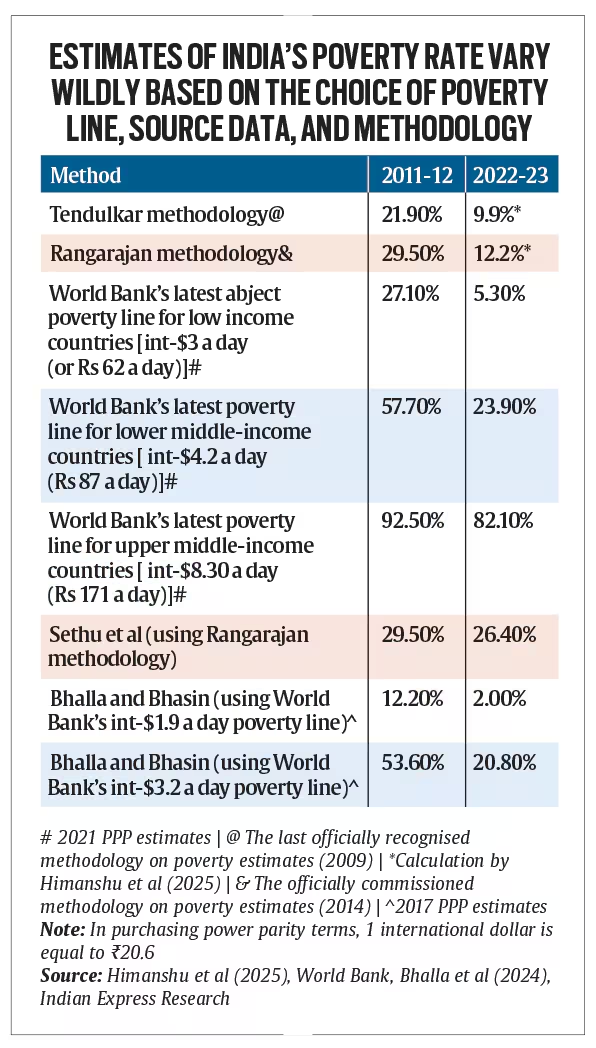 Copyright infringement not intended
Copyright infringement not intended
Decline in Extreme Poverty => The number of people living in extreme poverty in India fell from 27.1% in 2011-12 to 5.3% in 2022-23. This translates to lifting about 171 million people out of extreme poverty during this period.
Revised Historical Data => The World Bank's latest estimates also suggest that historical poverty levels in India were lower than previously thought. For example, the poverty rate in 1977-78 was 47%, not 64%.
Urban v/s Rural Poverty => The decline in poverty has been observed in both rural and urban areas. Rural extreme poverty dropped from 18.4% to 2.8%, while urban extreme poverty fell from 10.7% to 1.1% between 2011-12 and 2022-23.
Defining and measuring poverty in a country as vast and diverse as India is complex, leading to different figures and debates.
Multiple Realities => Depending on the poverty line used, the poverty rate in India can appear to be as low as 2% or as high as 82%.
Different Indicators Tell Different Stories
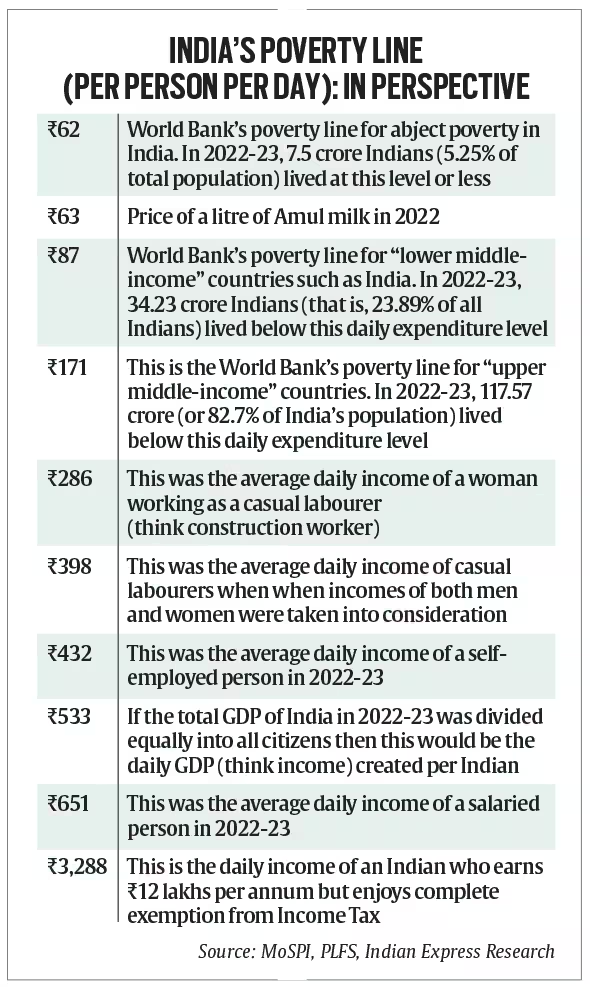
Copyright infringement not intended
NITI Aayog's Multidimensional Poverty Index (MPI) looks beyond income. It includes factors like health, education, and living standards. According to the MPI, India's multidimensionally poor population fell from 29.17% in 2013-14 to 11.28% in 2022-23.
Must Read Articles:
Poverty Declined For All Indians
Source:
|
PRACTICE QUESTION Q. "Poverty in India is a multi-causal phenomenon with deep-rooted social and economic factors." Critically analyze. 250 words |

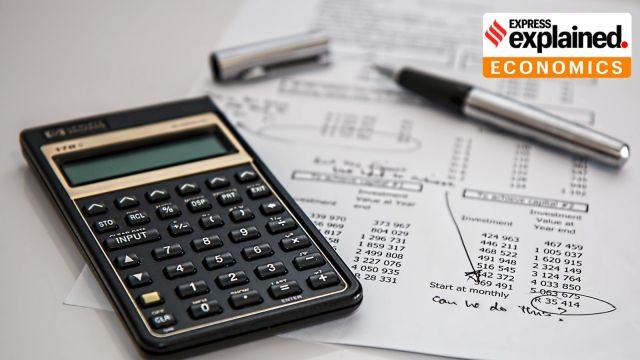
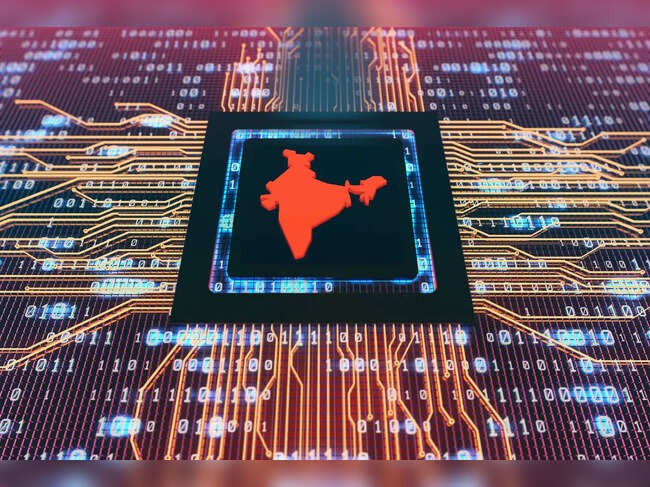

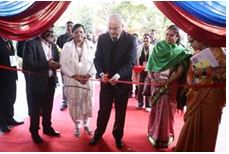



© 2025 iasgyan. All right reserved